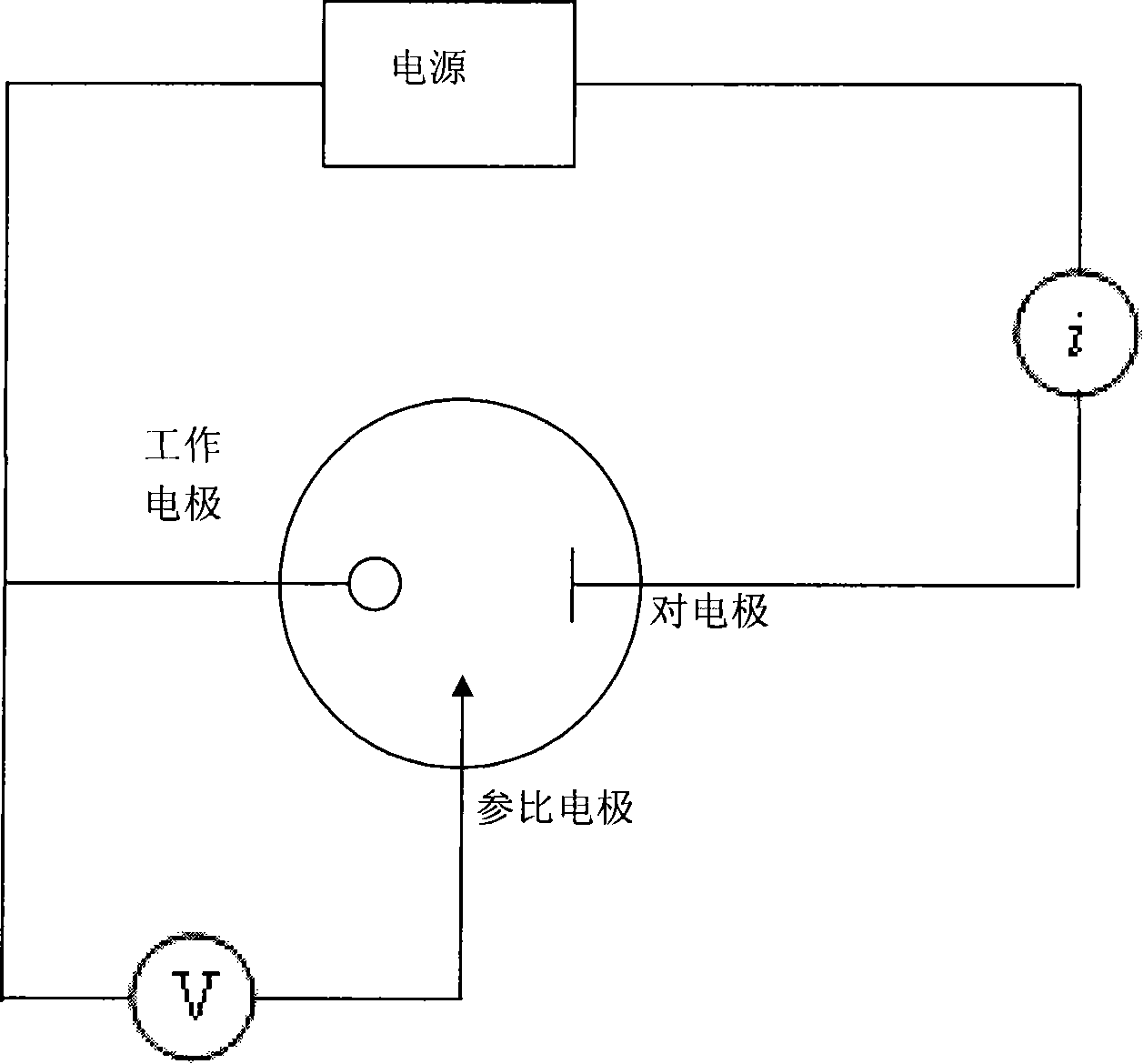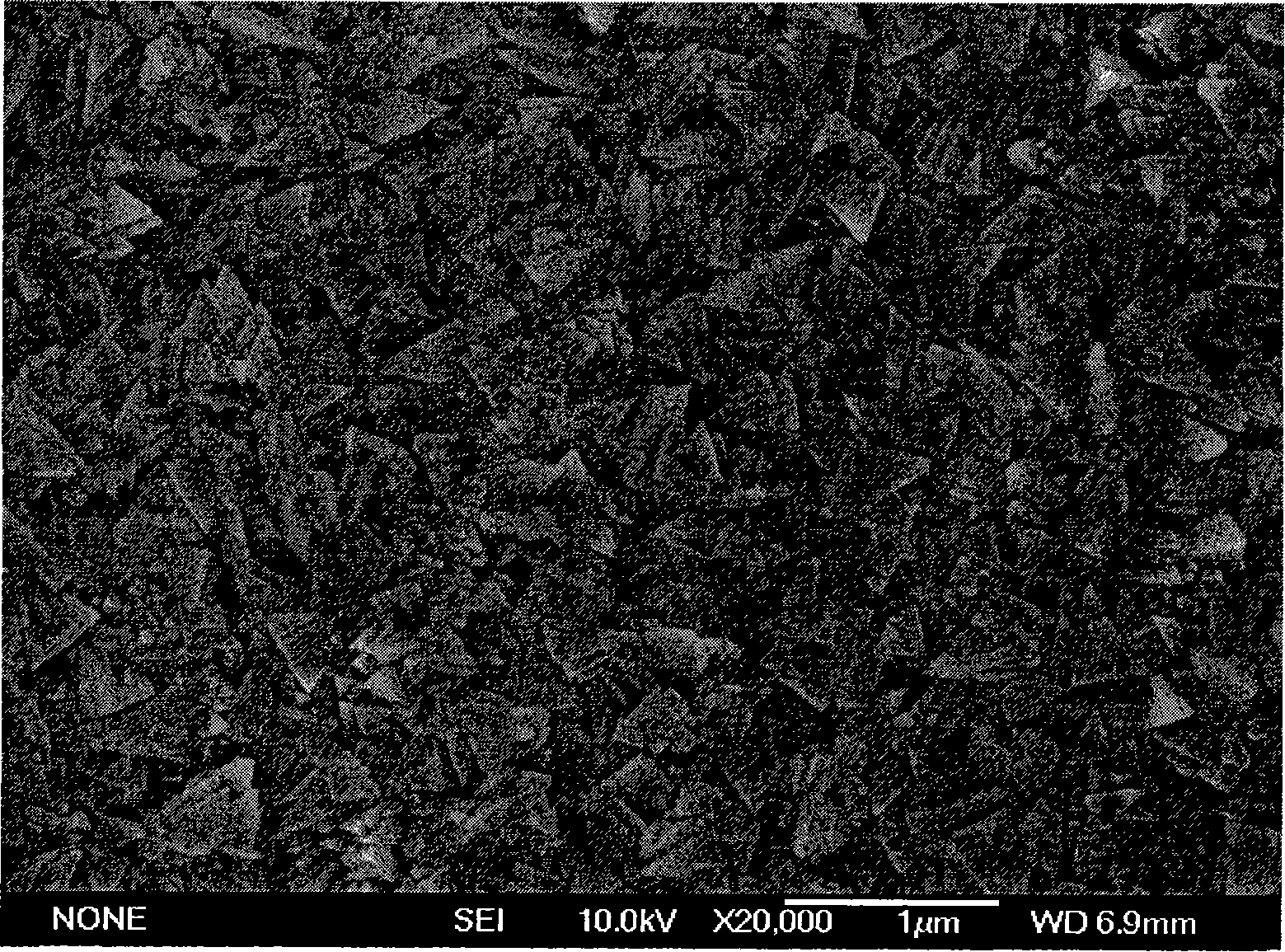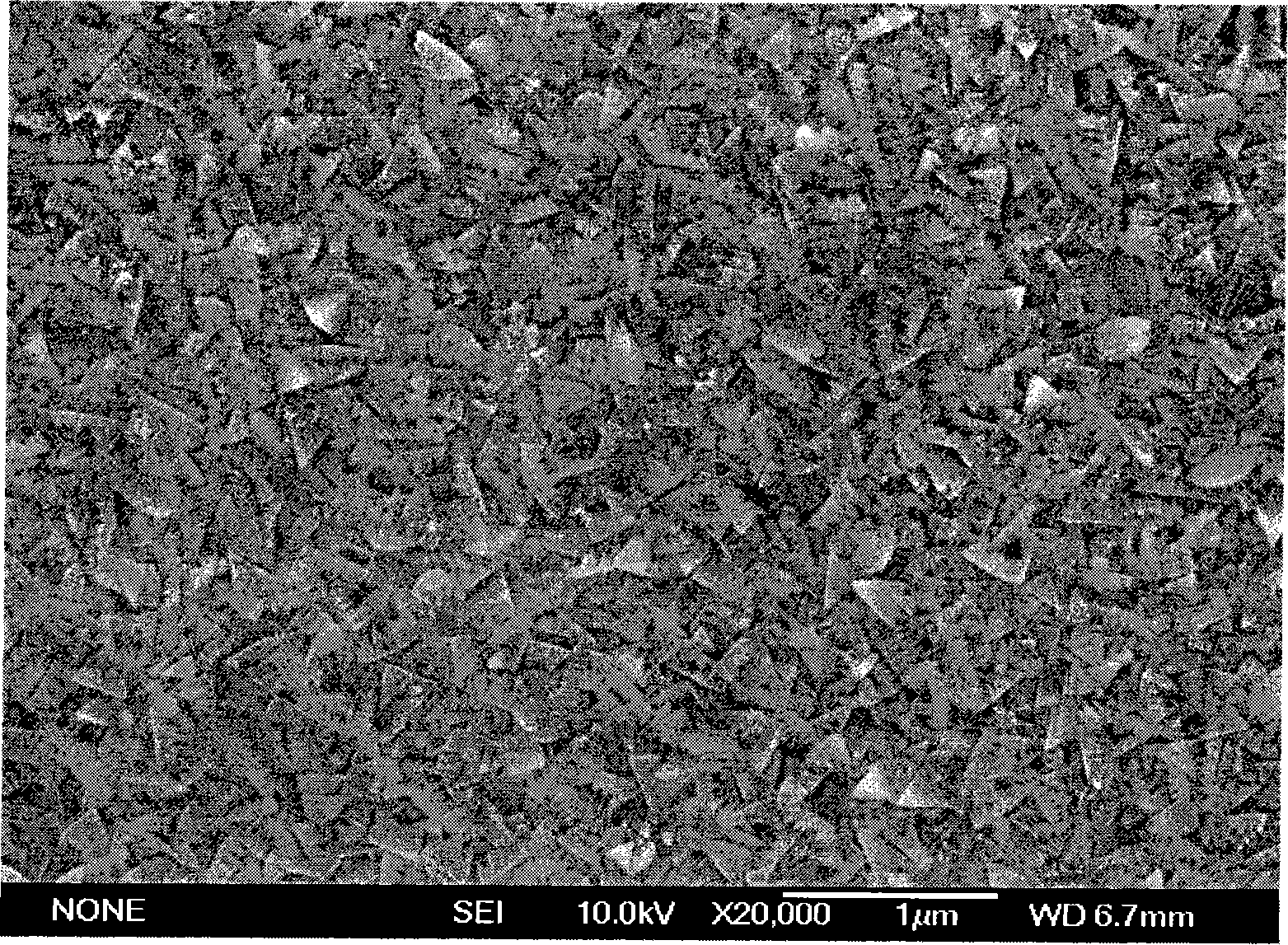Method for preparing cuprous thiocyanate thin film using triethanolamine complexing water-based galvanic deposit liquid
A cuprous thiocyanate, thin film technology, applied in circuits, capacitors, electrical components, etc., can solve problems such as unusability and poor stability of the precursor aqueous solution
- Summary
- Abstract
- Description
- Claims
- Application Information
AI Technical Summary
Problems solved by technology
Method used
Image
Examples
Embodiment Construction
[0016] The present invention all adopts chemically pure raw materials. In view of the poor stability of the precursor solution of CuSCN and the stable water-based electrolyte can only be obtained under acidic conditions, this method uses triethanolamine (TEA) as the complexing agent for the first time and prepares it under the condition of pH=8.5-9 A stable water-based electrolyte was obtained; the cleaned indium tin oxide (ITO) conductive glass was used as a deposition substrate and put into a three-electrode battery. figure 1 It is a schematic diagram of a standard three-electrode electrochemical system, Pt is the counter electrode, Ag / AgCl sat As a reference electrode, a p-CuSCN film with excess SCN was prepared by cathodic electrodeposition.
[0017] The electrolyte composition of the specific embodiment is shown in Table 1, and the electrodeposition process parameters are shown in Table 2.
[0018] Table 1
[0019] No.
M CuSO4
CuSO 4 / TEA molar ra...
PUM
 Login to View More
Login to View More Abstract
Description
Claims
Application Information
 Login to View More
Login to View More - R&D
- Intellectual Property
- Life Sciences
- Materials
- Tech Scout
- Unparalleled Data Quality
- Higher Quality Content
- 60% Fewer Hallucinations
Browse by: Latest US Patents, China's latest patents, Technical Efficacy Thesaurus, Application Domain, Technology Topic, Popular Technical Reports.
© 2025 PatSnap. All rights reserved.Legal|Privacy policy|Modern Slavery Act Transparency Statement|Sitemap|About US| Contact US: help@patsnap.com



